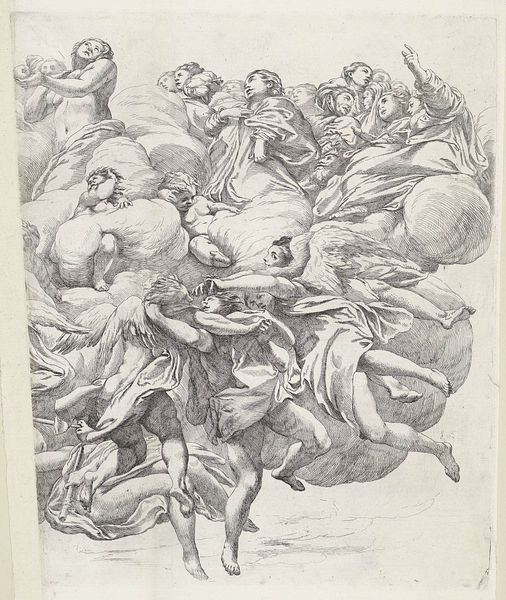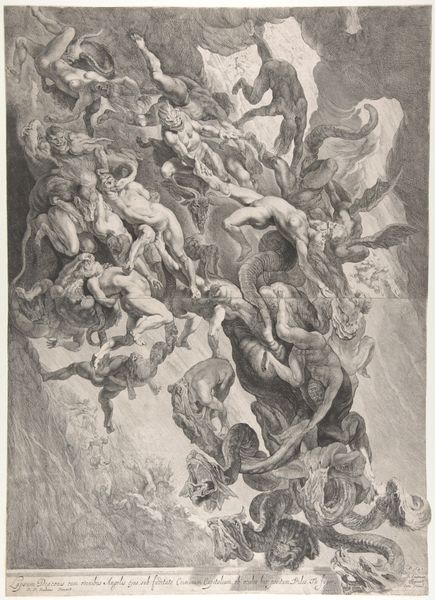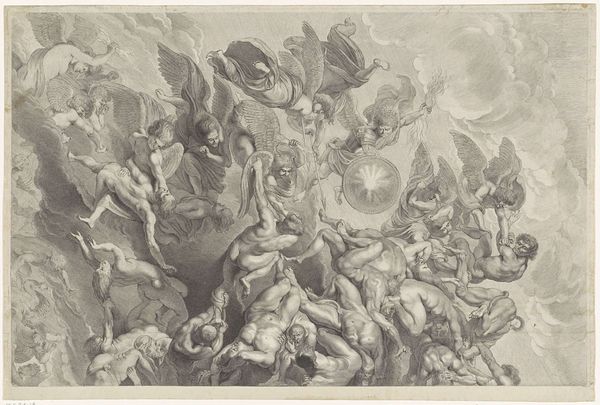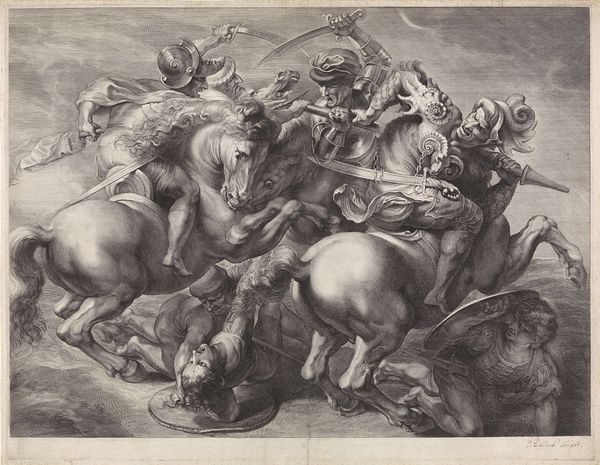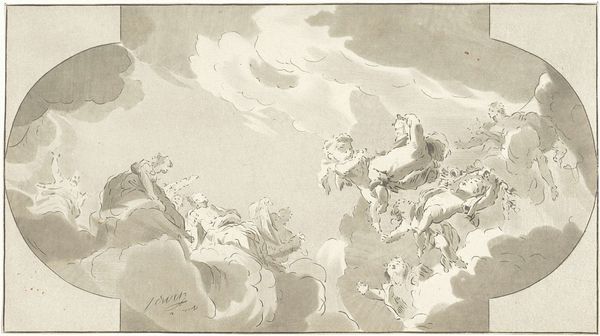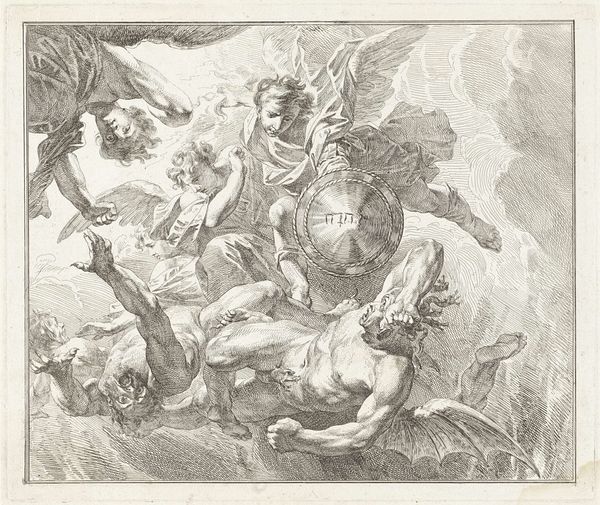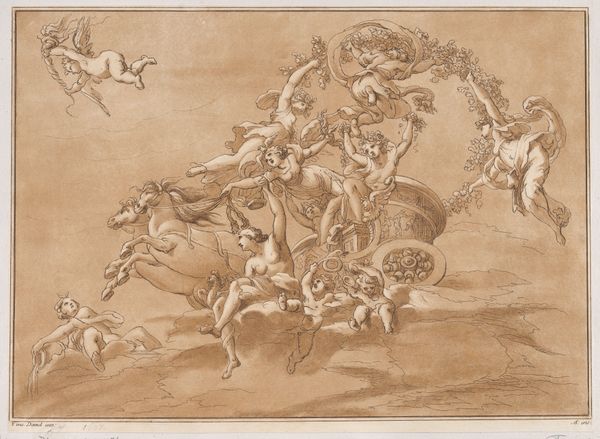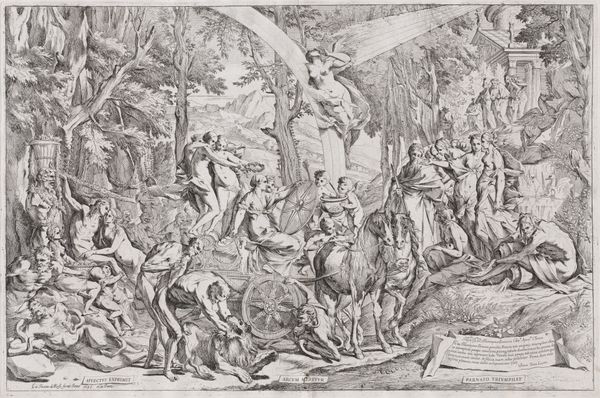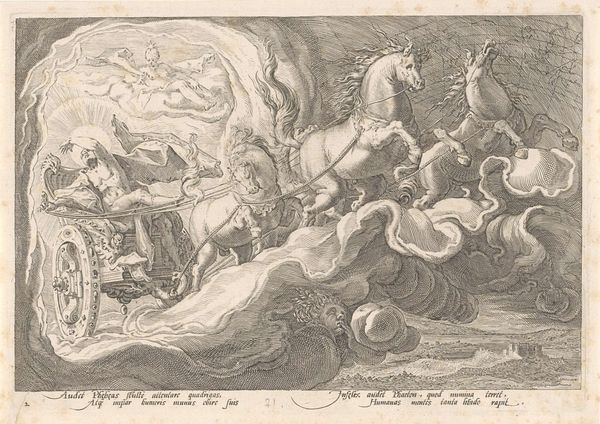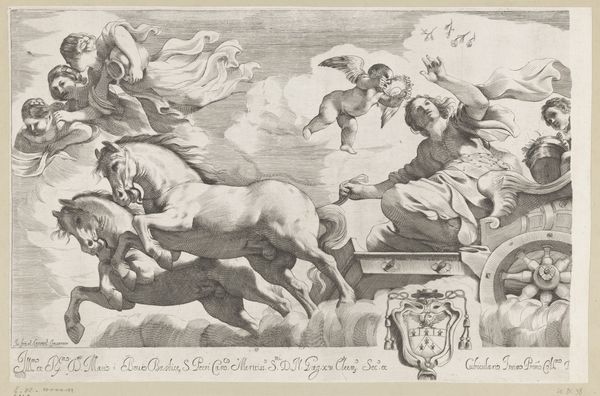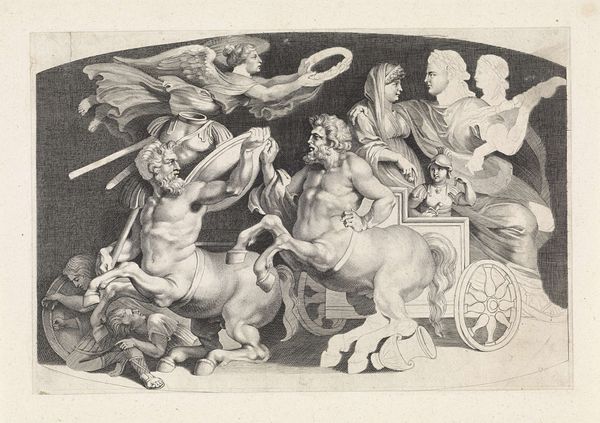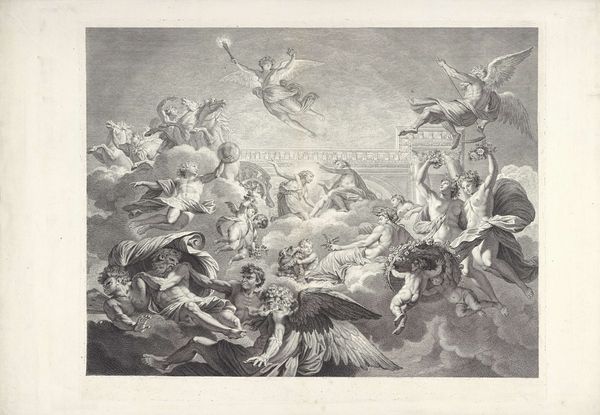
#
light pencil work
#
pen sketch
#
pencil sketch
#
incomplete sketchy
#
pencil drawing
#
ink drawing experimentation
#
pen-ink sketch
#
pencil work
#
fantasy sketch
#
initial sketch
Dimensions: height 395 mm, width 566 mm
Copyright: Rijks Museum: Open Domain
Editor: This drawing, "Hemelvaart van Maria (midden deel)" or "Assumption of Mary," created in 1642 by Giovanni Battista Vanni, looks like a pen and pencil sketch. The sheer number of figures floating in the clouds creates a sense of dizzying upward motion. What do you see in this piece? Curator: The upward surge is undeniable, isn’t it? But I also see a fascinating negotiation of power and representation, particularly concerning the role of women, divinity, and the male gaze within the visual traditions of the period. Consider how the representation of Mary in the Baroque period both elevates her as an intercessor and confines her within patriarchal structures. Where does this sketch sit on this spectrum, do you think? Editor: That's interesting. I was initially focused on the religious symbolism, but thinking about power dynamics definitely shifts my perspective. I guess the way Mary is passively lifted, rather than actively ascending, reinforces those patriarchal structures you mentioned? Curator: Precisely. The assumption narrative, while seemingly celebratory, often functions as a visual reinforcement of women's dependence on divine intervention, interpreted and mediated by male figures. It can make you consider the artist's intentions, the social context in which the artwork was created and received. But does this diminish the sketch, or does it, perhaps, give it another layer of relevance? Editor: I think it definitely adds relevance. By understanding the historical context, we can see the artwork as more than just a religious scene, but as a product and reflection of its time, revealing societal norms and power dynamics. Thanks for making me think beyond the obvious. Curator: And thank you for bringing your thoughtful perspective. It's by examining art through this lens of critical engagement that we can begin to unpack the complexities embedded within these historical representations and their impact on our present.
Comments
No comments
Be the first to comment and join the conversation on the ultimate creative platform.

